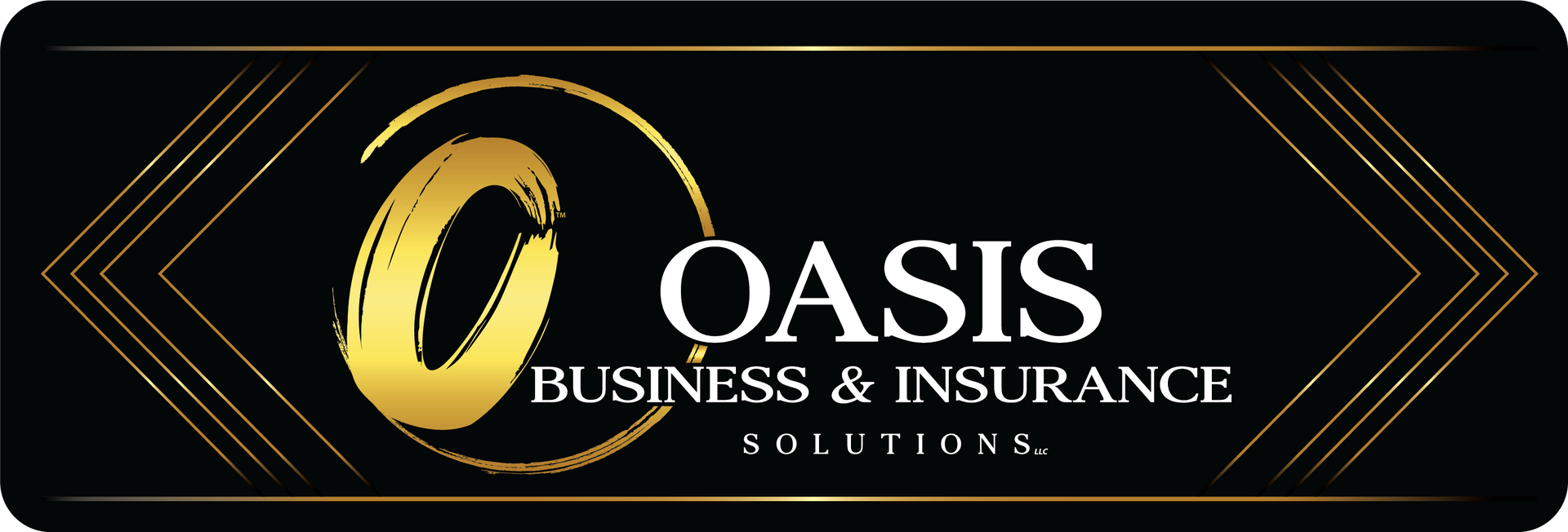Comprehensive Insights on Human Resources, Payroll, and Their Synergy for Companies and Employees
What is HR?
Human Resources (HR) is a crucial organizational function dedicated to optimizing the management of a company’s most valuable asset—its workforce. HR oversees the entire employee lifecycle, including talent acquisition, onboarding, training and development, performance management, compensation and benefits administration, compliance with labor regulations, and cultivating positive employee relations. The HR department is instrumental in aligning human capital strategies with the company’s overarching business objectives, ensuring organizational agility, compliance, and long-term sustainability.
By developing robust policies and practices, HR professionals foster a workplace environment that promotes high performance, innovation, and a culture of inclusion. In both small enterprises and global corporations, HR is central to risk mitigation, regulatory compliance, talent management, and the creation of a productive and engaged workforce that drives the company’s mission forward.
How HR Affects Business Performance
HR’s impact on organizational performance is multifaceted, extending across both strategic and operational dimensions:
Talent Acquisition and Retention: HR formulates targeted recruitment strategies, implements rigorous selection procedures, and oversees comprehensive onboarding programs, ensuring that the organization attracts and retains high-caliber talent aligned with business needs and culture.
Employee Engagement and Satisfaction: Through ongoing communication, professional development initiatives, and employee recognition systems, HR elevates engagement levels and job satisfaction, which are pivotal for productivity, morale, and retention.
Performance Management: HR develops and administers systematic performance appraisal processes, including goal setting, regular feedback, and competency-based evaluations, thereby aligning individual contributions with corporate objectives.
Legal and Regulatory Compliance: HR ensures organizational adherence to all labor laws, employment standards, workplace safety regulations, and anti-discrimination statutes, minimizing exposure to legal liabilities and financial penalties.
Organizational Culture and Values: HR engineers and perpetuates an organization’s culture and core values, fostering an inclusive, ethical, and innovative environment that enhances employer branding and competitive positioning.
Conflict Management: HR mediates workplace disputes, implements grievance mechanisms, and enforces fair disciplinary procedures, thereby maintaining harmony and integrity within the organization.
Change Management: HR orchestrates strategic change initiatives—such as mergers, restructuring, or digital transformation—by communicating effectively, managing transitions, and supporting workforce adaptation.
In essence, HR functions as both a strategic architect and operational steward, securing the organization’s most critical resources and ensuring resilience in a dynamic business landscape.
Key Functions and Roles within HR
The HR department comprises a spectrum of specialized functions, each essential to organizational effectiveness:
- Talent Acquisition and Staffing: Job analysis, recruitment planning, candidate sourcing, competency-based interviews, and selection assessment.
- Onboarding and Training: Structured orientation programs, skills development, technical and leadership training, and continuous learning initiatives.
- Employee Relations: Constructing channels for open communication, policy clarification, and fostering positive manager-employee interactions.
- Compensation and Benefits: Designing competitive salary structures, variable pay programs, benefits administration (health, retirement, wellness programs), and salary benchmarking.
- Performance Management: Setting KPIs and performance standards, regular reviews, 360-degree feedback systems, and succession planning frameworks.
- Compliance and Risk Management: Monitoring regulatory updates, policy documentation, adherence to statutory requirements, and internal audits.
- Occupational Health and Safety: Implementation of safety protocols, risk assessments, and compliance with occupational health legislation.
- Diversity, Equity, and Inclusion (DEI): Developing diversity strategies, conducting bias training, and promoting inclusive hiring and advancement practices.
- HR Administration: Maintaining accurate HR records, HRIS (Human Resource Information System) management, and process optimization for administrative tasks.
These responsibilities are typically fulfilled by HR specialists, generalists, managers, and business partners who collectively contribute to the organization’s human capital strategy.
What is Payroll?
Payroll is a specialized function focused on the systematic administration of employee compensation. It encompasses the calculation of gross earnings, statutory and voluntary deductions, tax withholdings, benefit allocations, and the disbursement of net wages. Payroll operations are fundamental for regulatory compliance, employee satisfaction, and organizational credibility.
Beyond simple payment, payroll’s responsibilities include comprehensive recordkeeping, statutory filings, and rigorous adherence to national and local tax regulations. It also requires safeguarding sensitive personal and financial data, providing employees with detailed payslips, and addressing queries related to compensation and deductions.
Payroll Operations within a Company
Payroll is executed by either an in-house team, often situated within HR or finance, or via external payroll service providers. The following outlines the typical payroll workflow:
- Employee Data Acquisition: Collecting and updating employee information such as wage rates, tax statuses, benefit selections, and banking details.
- Time and Attendance Monitoring: Recording hours worked, overtime, paid leave, and absences using electronic timesheets or workforce management systems.
- Earnings and Deductions Calculation: Computing gross pay including base salary, overtime, bonuses, and commissions; applying deductions for taxes, Social Security, healthcare premiums, and retirement contributions.
- Payment Processing: Disbursing net salaries through direct deposit, checks, or payroll cards, adhering to established payroll cycles (e.g., biweekly, monthly).
- Regulatory Reporting and Tax Compliance: Preparing and submitting payroll tax filings (e.g., IRS, Social Security Administration), generating year-end tax documents (e.g., W-2s), and maintaining compliance with wage and hour laws.
- Payroll Documentation and Confidentiality: Storing payroll records securely for statutory periods, ensuring data privacy, and facilitating audits or reconciliation processes as required.
Impeccable payroll execution strengthens employee trust, ensures legal compliance, and upholds the company’s financial integrity.
Integration of HR and Payroll Functions
Although HR and Payroll are distinct disciplines, their integration is vital for seamless business operations. Effective collaboration ensures both organizational and employee needs are addressed holistically:
- Information Synchronization: HR communicates all personnel changes (hires, terminations, salary adjustments, benefit enrollments) to Payroll, ensuring data is current and accurately reflected in compensation processes.
- Benefits Coordination: HR manages benefit programs while Payroll administers the corresponding deductions, ensuring compliance and accuracy in financial transactions.
- Regulatory Alignment: Both functions collaborate to uphold wage and hour legislation, tax regulations, and internal governance standards, mitigating risks of non-compliance.
- Employee Support Services: Unified HR and Payroll services provide employees with clear information on compensation, benefits, and workplace policies, enhancing satisfaction and reducing administrative errors.
- Onboarding and Offboarding Synergy: HR oversees onboarding and exit processes, while Payroll executes accurate compensation for new hires, departing employees, and final settlements (including unused leave or severance).
- Data Security: Both departments are entrusted with safeguarding sensitive information, adhering to strict confidentiality and data protection protocols.
Organizational Impact and Value Creation
When HR and Payroll operate in harmony, businesses benefit from operational efficiency, strategic risk management, and enhanced employee experience. Accurate, transparent processes instill confidence in both leadership and staff, drive organizational performance, and support compliance with external and internal requirements.
Poor integration, conversely, can result in payroll inaccuracies, compliance breaches, diminished employee morale, and potential legal exposure—all of which undermine organizational effectiveness and reputation.
Conclusion
HR and Payroll are not merely transactional functions; they are strategic enablers of business success. By recruiting and supporting top talent, ensuring equitable and timely compensation, and fostering a culture of compliance and respect, these departments empower employees and position the organization for sustained growth and prosperity.
Comprehensive Employee Benefits: Group Life Insurance, Health, and Beyond
An In-Depth Guide to Company-Offered Employee Benefits
In today's competitive business landscape, attracting and retaining top talent goes far beyond offering a competitive salary. Employees are increasingly seeking comprehensive benefits packages that protect their well-being, offer peace of mind, and enhance their overall quality of life. For employers, providing a robust array of benefits is not just a way to care for their workforce, but also a strategic investment in productivity, loyalty, and organizational success.
This document explores in detail the main categories of benefits companies can offer employees—focusing particularly on group life insurance and health benefits, but also covering a range of other valuable perks that can contribute to a positive employee experience.
Group Life Insurance
Group life insurance is a policy offered by employers to provide financial protection for employees’ families in the event of their untimely passing. This type of insurance is typically provided at little or no cost to employees and serves as a foundational benefit in most comprehensive packages.
Types of Group Life Insurance
- Basic Group Term Life Insurance: Generally provided as a standard benefit. It pays out a predetermined sum (often one or two times the employee’s annual salary) to the employee’s designated beneficiaries.
- Supplemental Life Insurance: Employees can often choose to purchase additional coverage beyond the basic amount, sometimes including insurance for spouses and children.
- Accidental Death & Dismemberment (AD&D): This rider or separate policy provides additional benefits in the case of accidental death or the loss of a limb or function.
Benefits of Group Life Insurance
- Gives employees peace of mind knowing their loved ones are protected.
- Usually does not require a medical exam for basic coverage, making it accessible to all eligible employees.
- Offers competitive group rates that are often less expensive than individual policies.
- Can be easily administered through payroll deductions for supplemental coverage.
Health Benefits
Health benefits are among the most valued perks for employees and are often a deciding factor for candidates when choosing between job offers. Health insurance protects employees and their families from the financial impact of medical expenses and promotes physical and mental well-being.
Types of Health Insurance Coverage
- Medical Insurance: Covers doctor visits, hospital stays, surgeries, prescription medications, and preventive care. Plans vary by provider, network, and coverage level (e.g., HMO, PPO, HDHP).
- Dental Insurance: Helps pay for routine dental exams, cleanings, fillings, and sometimes orthodontia or major dental procedures.
- Vision Insurance: Covers eye exams, glasses, contact lenses, and sometimes corrective surgery.
- Prescription Drug Plans: May be included in medical coverage or offered as a separate benefit, providing discounted or subsidized prescriptions.
- Telemedicine Services: Allow employees to consult healthcare providers remotely, increasing convenience and access to care.
Health Spending and Savings Accounts
- Flexible Spending Accounts (FSAs): Permit employees to set aside pre-tax dollars to pay for eligible medical, dental, and vision expenses.
- Health Savings Accounts (HSAs): Available to those with high-deductible health plans (HDHPs), allowing pre-tax savings for qualifying medical expenses. HSAs are portable and can accrue interest or investment returns.
- Health Reimbursement Arrangements (HRAs): Employer-funded accounts that reimburse employees for out-of-pocket medical costs.
Mental Health and Wellness Programs
- Employee Assistance Programs (EAPs): Offer confidential counseling and resources for personal or professional challenges, such as stress, substance abuse, family issues, or legal matters.
- Wellness Initiatives: May include gym membership discounts, wellness challenges, smoking cessation programs, nutrition counseling, and onsite health screenings.
- Access to Mental Health Professionals: Coverage for therapy, psychiatric services, and crisis intervention.
Other Valuable Benefits Companies Can Offer
Beyond traditional health and life insurance, companies are increasingly expanding their benefits portfolios to enhance employee satisfaction, engagement, and retention. The following are some of the most popular and impactful additional benefits:
Retirement Plans
- 401(k) or 403(b) Plans: Tax-advantaged retirement savings accounts, often with employer matching contributions.
- Pension Plans: Defined benefit plans offering a guaranteed retirement income, though less common today.
- Financial Planning Resources: Access to professional advice and tools for managing savings and investments.
Paid Time Off (PTO)
- Vacation Days: Paid leave designed for rest, travel, and personal activities.
- Sick Leave: Time off for illness or injury, supporting employees’ health and recovery.
- Personal Days: Flexible paid leave for personal matters or emergencies.
- Paid Holidays: Company-observed holidays where employees receive paid time off.
- Parental Leave: Paid or unpaid leave for new parents, including maternity, paternity, and adoption leave.
Disability Insurance
- Short-Term Disability: Provides partial income replacement for temporary disability due to illness, injury, or childbirth.
- Long-Term Disability: Offers income replacement for prolonged periods of disability, typically after short-term coverage expires.
Work-Life Balance and Flexibility
- Remote and Hybrid Work Options: Allow employees to work from home or alternate between home and office, promoting flexibility.
- Flexible Scheduling: Permits alternate start/end times or compressed workweeks, accommodating personal commitments.
- Job Sharing: Two employees share the responsibilities of a full-time position.
Professional Development
- Tuition Reimbursement: Covers all or part of the cost of courses, degrees, or professional certifications.
- On-the-Job Training: Offers formal or informal learning opportunities.
- Mentorship Programs: Pair employees with experienced colleagues for guidance and career growth.
- Conference Attendance: Encourages skill development and networking outside the company.
Additional Perks and Voluntary Benefits
- Commuter Benefits: Reimburse or subsidize public transportation, parking, or ridesharing costs.
- Childcare Assistance: Onsite childcare centers, subsidies, or referral services for working parents.
- Legal and Identity Theft Services: Access to legal advisors or identity protection plans.
- Pet Insurance: Helps cover veterinary expenses for employees’ pets.
- Employee Discounts: Reduced prices on products, services, or local attractions.
- Relocation Assistance: Financial or logistical support for employees moving to a new location for work.
The Strategic Value of Offering Employee Benefits
Organizations that invest in comprehensive benefits enjoy a wide array of advantages:
- Attracting Top Talent: A strong benefits package is often a key differentiator in the job market.
- Enhancing Retention: Satisfied employees are more likely to stay with the company, reducing turnover and associated costs.
- Boosting Morale and Productivity: Employees who feel valued and supported are more engaged, innovative, and productive.
- Improving Well-Being: Physical, mental, and financial health benefits contribute to a happier, healthier workforce.
- Supporting Diversity and Inclusion: Tailored benefits can help meet the needs of a diverse workforce and promote an inclusive culture.
Conclusion
Comprehensive employee benefits, encompassing group life insurance, health coverage, and a wide spectrum of additional perks, are essential tools for organizations aiming to foster a thriving, loyal, and high-performing workforce. As employee expectations evolve, companies that innovate and expand their benefits offerings will not only attract the best talent but also establish themselves as employers of choice in an increasingly competitive world.







